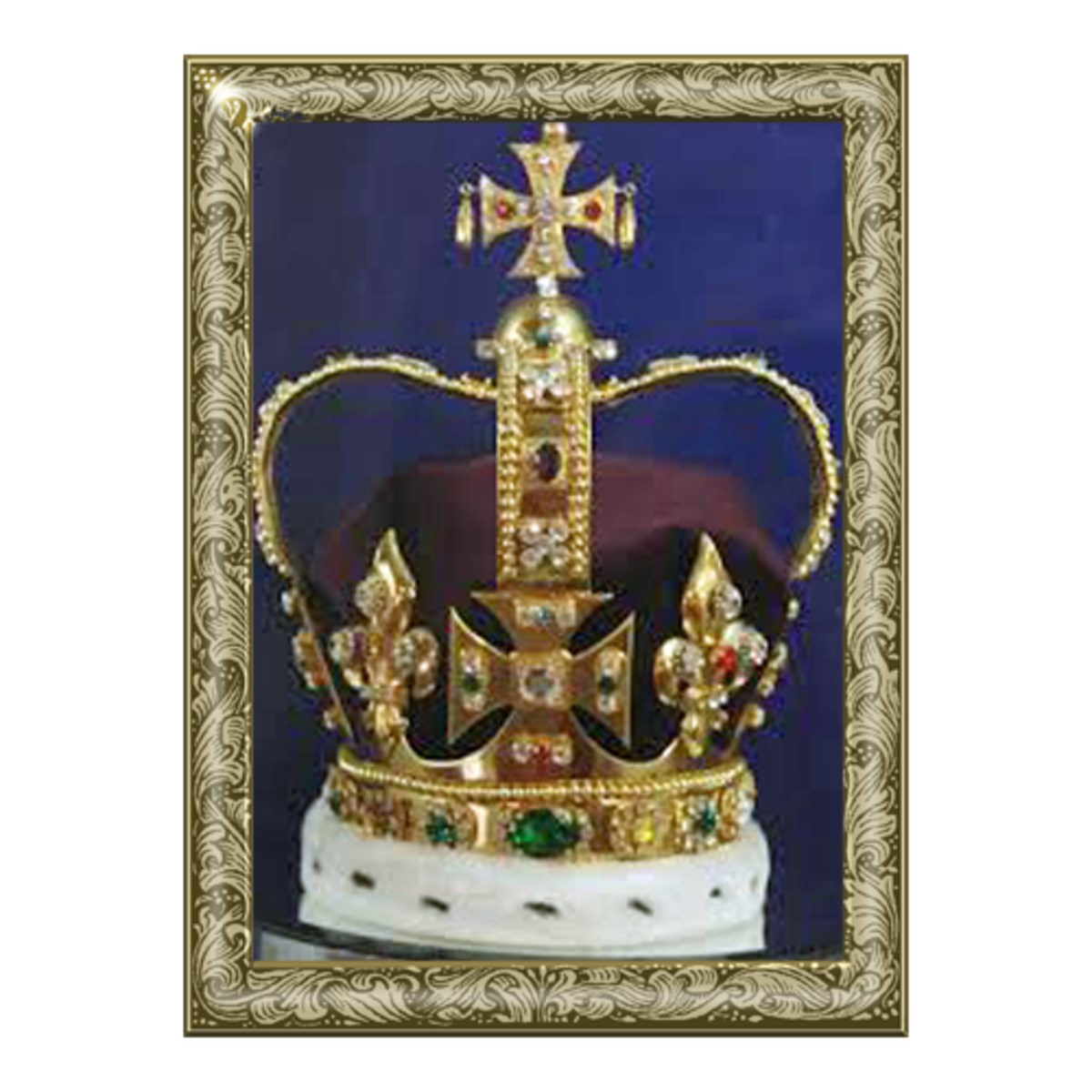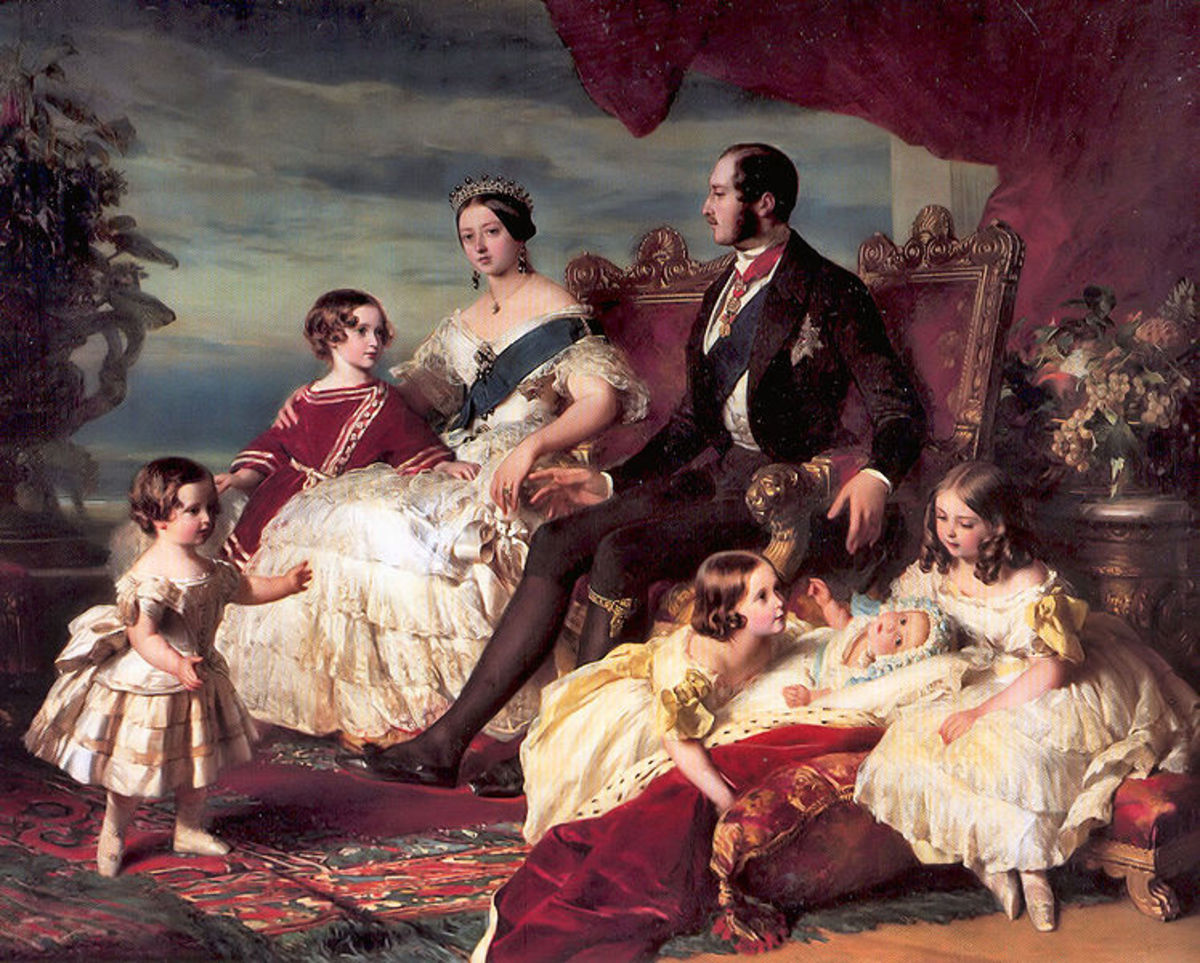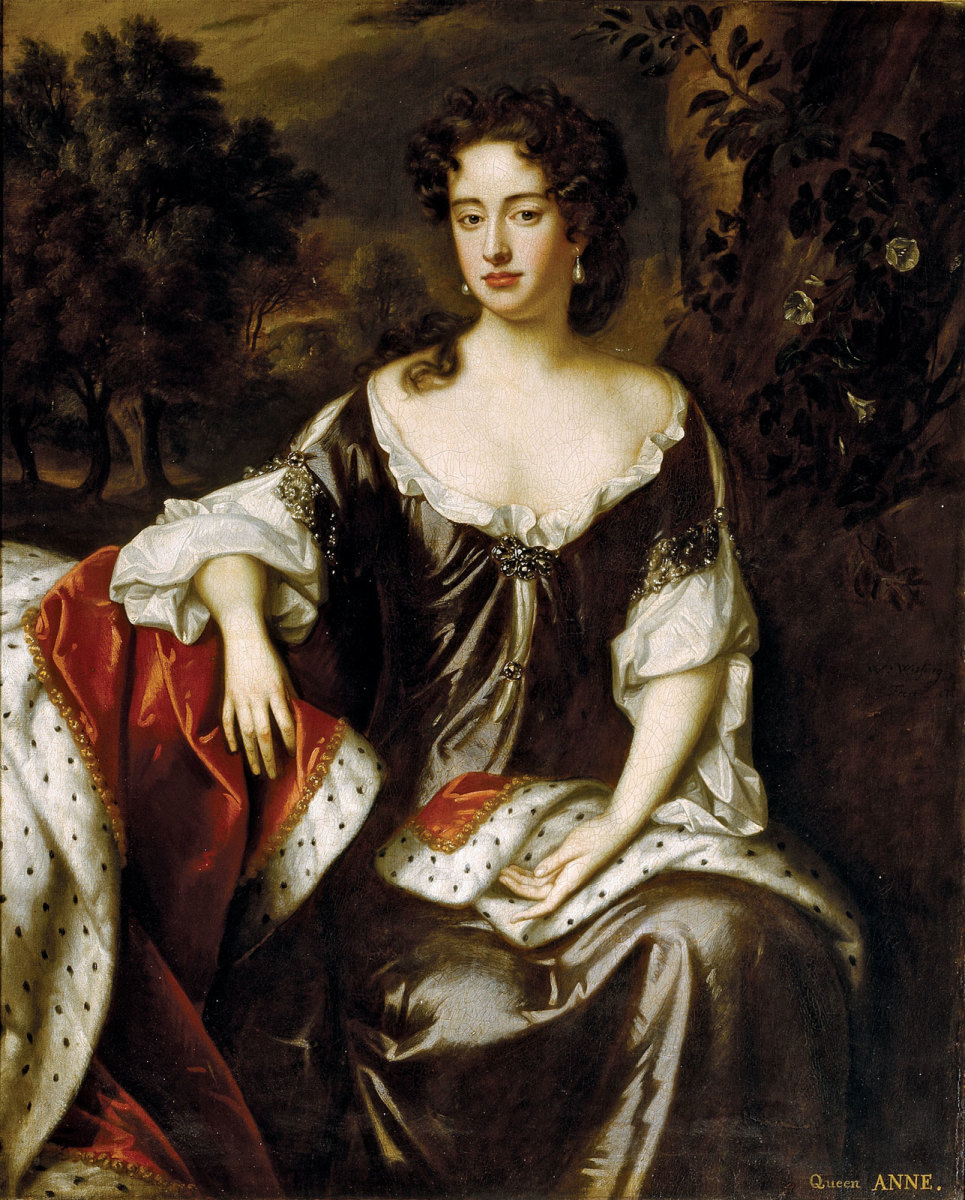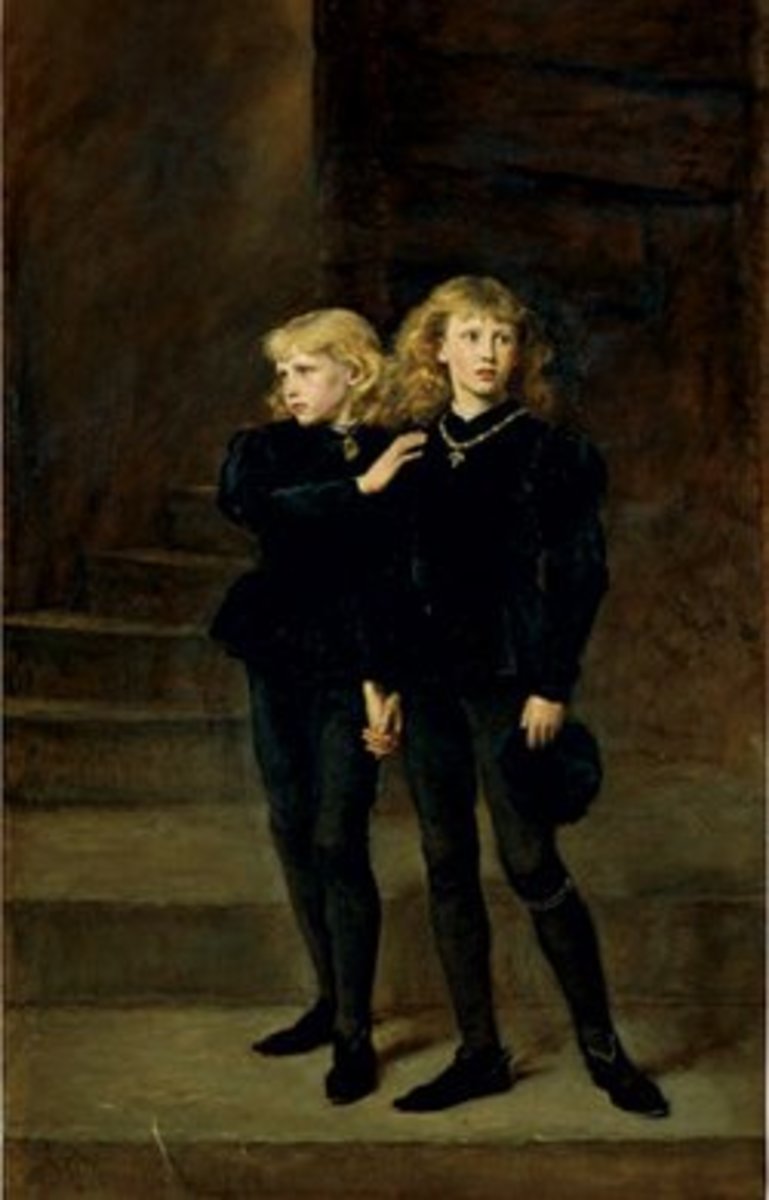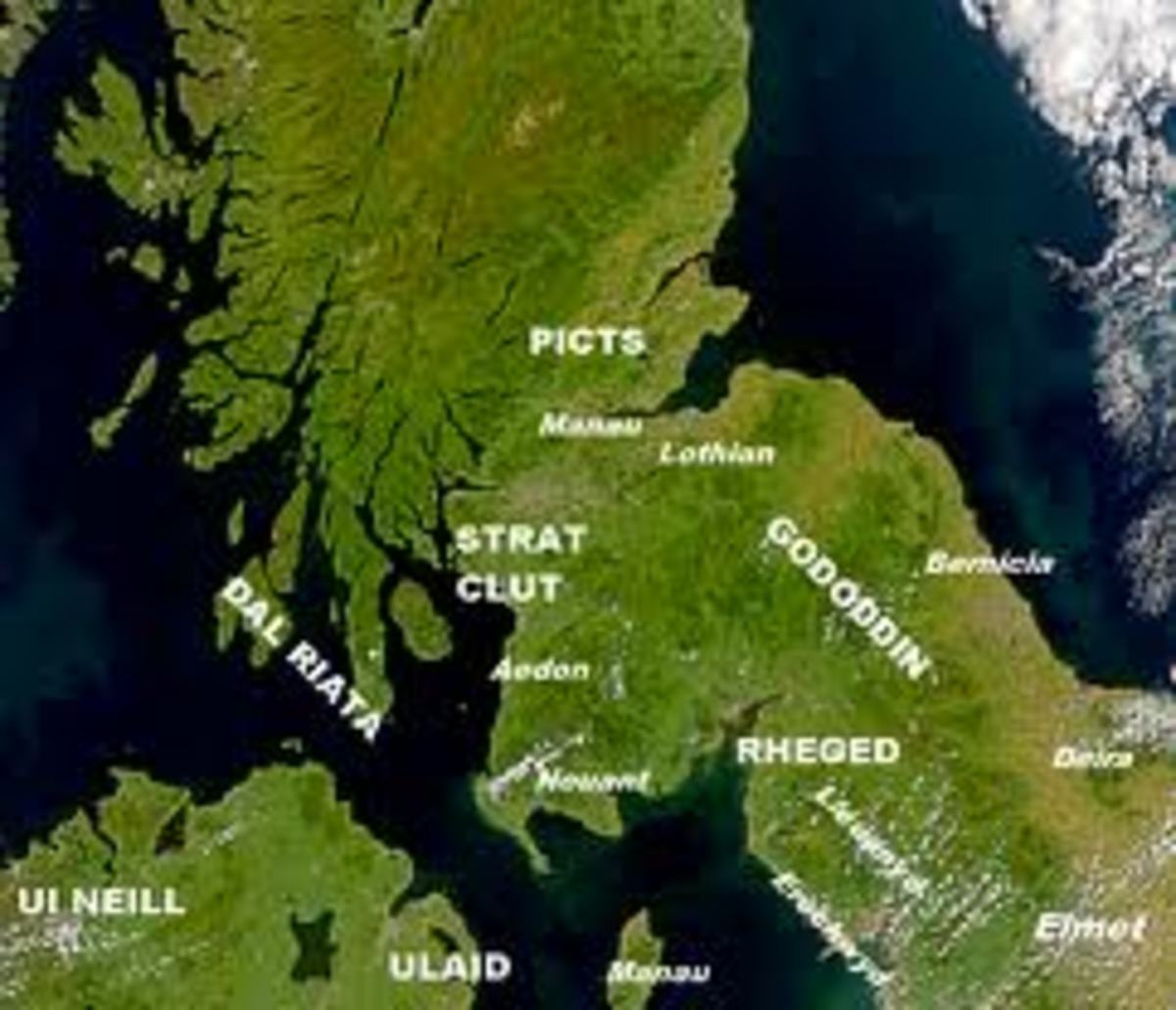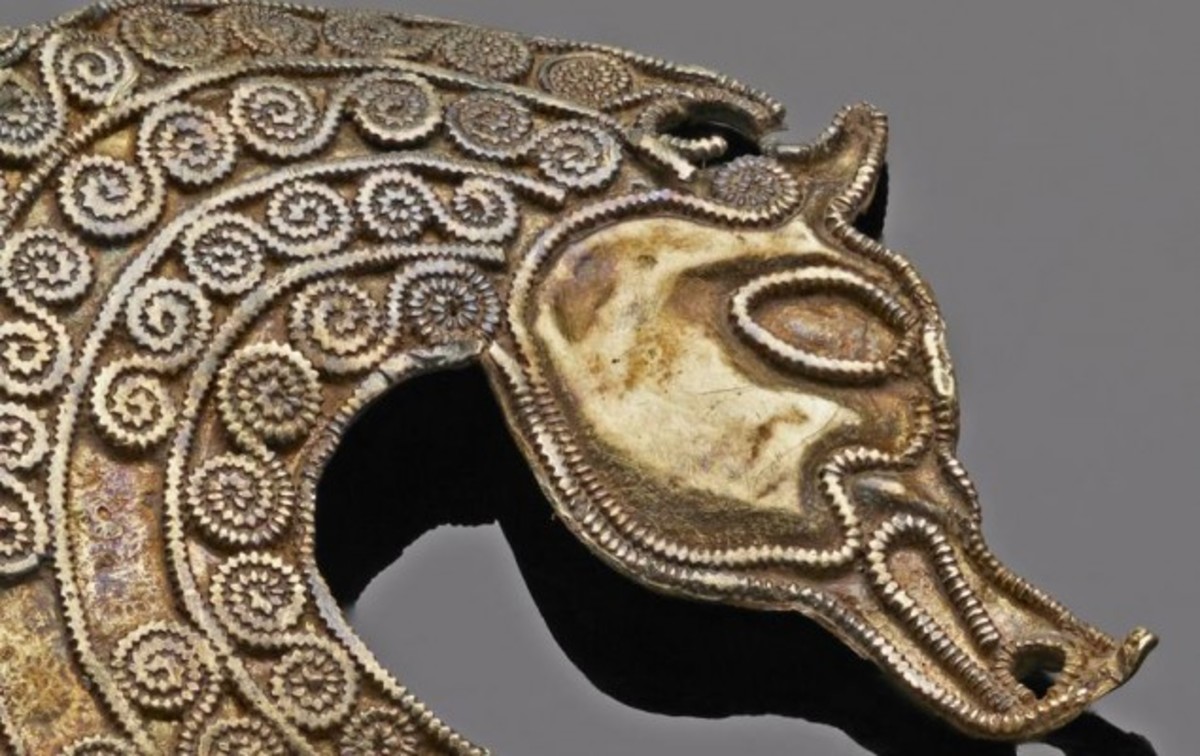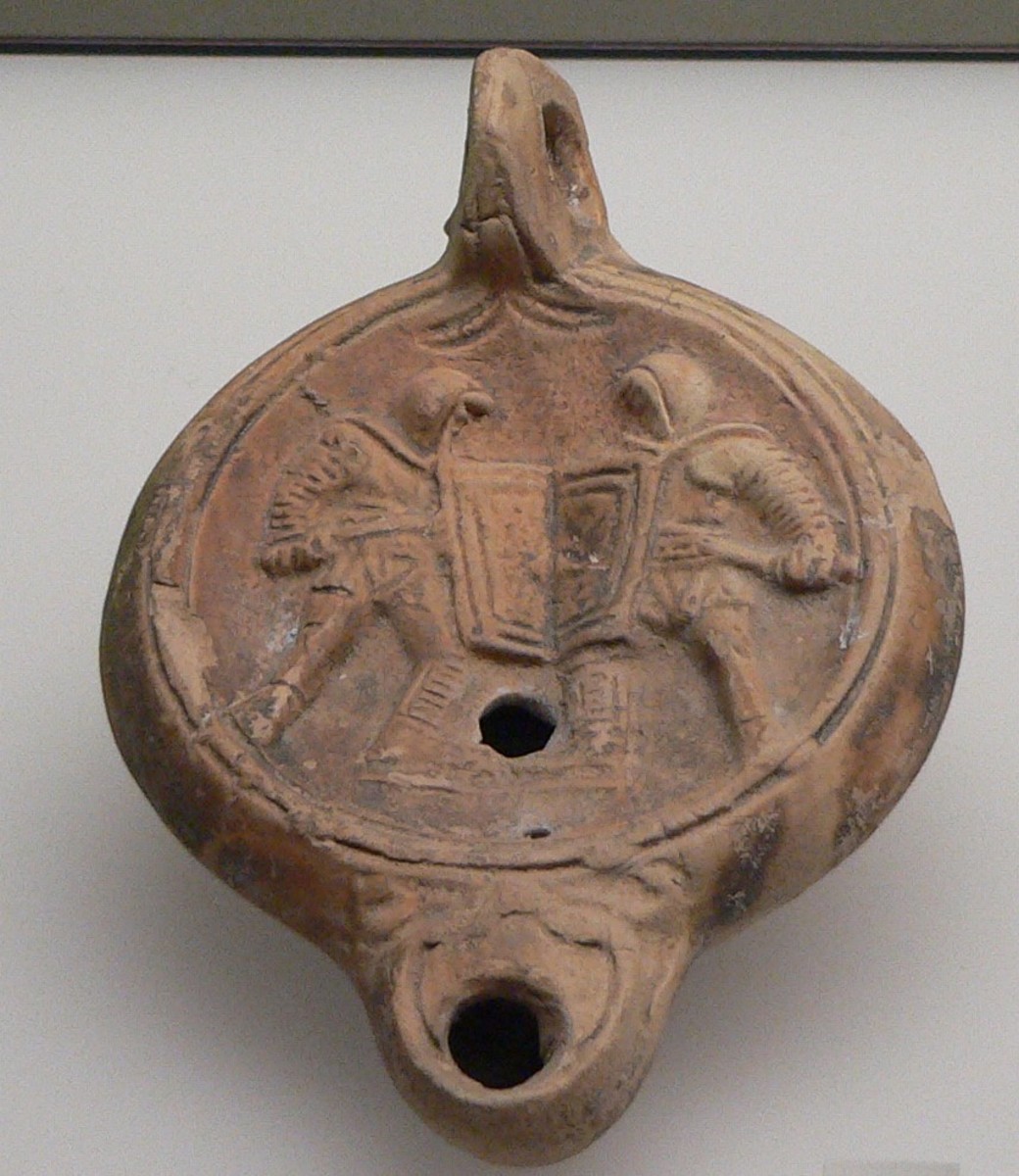King George V, 1865-1936
A happy childhood
George V was born on 3RD June 1865, second son of Edward, Prince of Wales and Princess Alexandra of Denmark, grandson of Queen Victoria. Prince George had a very close relationship with his parents and siblings especially the heir to the throne, Albert who was a year older than him. The boys spent most of their childhood at the Queen’s estates at Sandringham in Norfolk and occasionally journeyed south to visit their grandmamma at Osborne in the Isle of Wight.
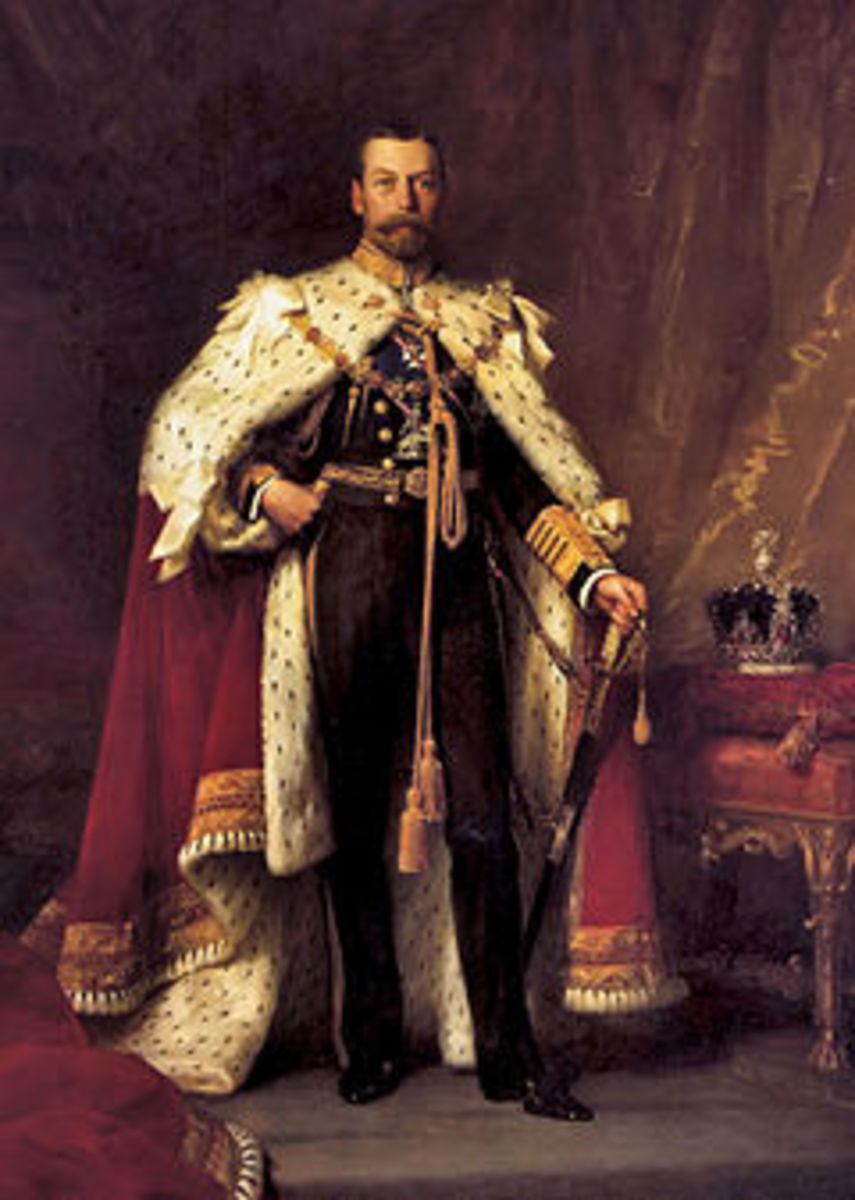
Education
At the age of six George began formal lessons with his elder brother who was known in the family as Eddy. Neither of the boys was an outstanding scholar but their tutor felt that Prince Eddy was more diligent with his studies when his brother was with him so against the wishes of the Queen, Prince Eddy accompanied his brother into the Navy where they continued their studies. Between 1879 and 1882 the two princes were aboard HMS Bacchante and did three tours, visiting as far as Australia, the third tour lasting for two years.
In 1883 aged 18 the princes were separated and George continued his career as a midshipman in HMS Canada, receiving his commission in 1885. In November 1891 Prince George contracted typhus which he survived but his brother Prince Eddy contracted influenza and died on 14th January 1892 as the disease spread in the form of pneumonia. . Prince George entered the Royal Navy as a boy seaman in 1877 and ascended to the rank of Captain before his brother’s death forced him to resign his commission. Following the royal precedent of King Henry Viii, Prince George married his brother’s fiancée Mary of Teck. The couple were married in the Chapel Royal at St James Palace on 6th July 1893 surrounded by huge cheering crowds.
The King’s first child, Prince Edward, later Edward VIIIth then, Duke of Windsor was born, in June 1894 , he was the eldest of their six children. On the death of Queen Victoria in 1901, his father became King. Later in the year the Prince and Princess visited all the self governed colonies of the newly formed federation (commonwealth). Six months of official engagements boosted his confidence levels and he himself was impressed by the differing attitudes to life, the lack of class distinctions and the diversity and independence of the countries. On his return after a long painful absence from his children, George was given the title of Prince of Wales, heir to the throne.
Kaiser Bill
The prince was sent to see his cousin the Kaiser, in Germany, to celebrate his birthday. Relations between the two nations were poor as the German policy to increase the size of the navy was seen as a threat to British supremacy at sea. Although a cordial family visit took place, Prince George was unable to smooth relations between the two governments. The prince played a low key rather ambassadorial role in helping to establish the entente with France and later with Russia. In 1905 the royal couple went on another long voyage, this time to India. The visit was long and extensive with the prince showing the monarchy all over the country, and although he abhorred the stance of some colonialists who treated the Indians as a conquered race, he did not feel that the people of India needed self government, just a wise colonial administration. The long trips abroad were said to have contributed to the somewhat distant relationship that developed between the King and Queen and their own children
The Accession to the throne
Prince George’s father died on 6th May 1910 after a bad attack of bronchitis which was followed by a series of heart attacks. King George recorded in his diary “I have lost my best friend and the best of fathers”. The accession of King George was marked by the sight of Halley’s Comet traversing the skies of the capital. George was crowned with his queen the following year and then asked that he could visit India, a country he loved, for a coronation Durbar at Delhi. Owing to problems associated with removing the crown jewels from the UK, a special crown was made for India. King George entered the Delhi Durbar on 12th December 1911, entering on horseback, wearing uniform. Many of the crowd failed to recognise him as he was not riding an elephant which was associated with the ruling classes in India. He announced that the capital would be moved to New Delhi which did little to strengthen the position in India. However at that time Independence seemed a very long way away.
On the royal couples return they entered a country in the midst of strikes. One after another groups of workers went on strike, for better conditions, higher wages. The National Insurance Act of 1911 helped to reduce some grievances but did not eliminate the feeling of discontent. The King was disturbed, there was talk of revolution, In August 1911 the railways went on strike and the garrison at Aldershot was transferred to London to defend the city if needed. The strike lasted for just three days but as Queen Mary wrote “one tiresome thing after another”. During the first fourteen years of the century the £ in the workers pocket had decreased by twenty five percent whilst wages had only increased by a few pence. It was also the time of increased militancy from the suffragette movement, with the bombing of a house being constructed for David Lloyd George and the death of Emily Davidson at the 1913 Derby when she threw herself under the King’s horse. The King and Queen hated disorder and this upset and antagonised them. He did however have sympathies with the forced feeding issue and condemned the forced feeding of the suffragettes who were on hunger strike. Their action was suspended when war was declared.
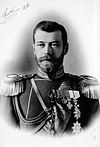
The War Years
In early 1914 the Home Rule issue for Ireland could no longer be ignored. In July 1914 the King opened a conference attended by the government, the opposition, the Ulster Loyalists and the Irish Nationalists. The conference failed but its object was to let the Ulster territories opt out of Home rule. At the same time activities were happening in Europe, the assassination of Archduke Franz Ferdinand and his wife precipitated the rush into war which was declared by the King on August 4th 1914. The decision was greeted by cheering crowds in London. It was believed that the war would be over by Christmas. The plan was that the Royal Navy would beat the German fleet on the seas, a small force would be sent to France just to make the numbers up whilst the French in the west and the Russians in the east Would rush through, flatten the Germans and the country at home would not feel much of the action. How wrong they were! As the troops became bogged down in trench warfare there developed very strong anti German attitudes within the country. Any shops or businesses with a German sounding name were at best shunned and at worst attacked by angry crowds, especially after the shelling of Hartlepool and Scarborough by the German Navy in which 40 civilians, including women and children, were killed. The Kings’ public face did not alter, confident and cheerful and never morbid. In private he was concerned and moved by the suffering of the troops and the civilian population. George’s public duties became more important- there were numerous visits to bases, inspections and hospital visits, over 50,000 decorations were “pinned on” by King George. This included visits to France, inspecting the troops where the action was taking place; he was injured in a fall from his horse which reared when an aeroplane flew over troops he was inspecting. He was in great pain as he fractured his pelvis and this caused him discomfort for the rest of his life. The royal family led by example, the heir Prince Edward served firstly in France and then in The Mediterranean, Prince Albert (George VI) took part in the battle of Jutland.
In 1917 the Russian revolution took place and George’s cousin, tsar Nicholas was overthrown. Initially he and his family were offered asylum in the United Kingdom but it is believed that this offer was withdrawn as King George himself was worried that the revolution would spread. It is probable that the King never believed that the family would be murdered and indeed other members of the family were rescued by British ships in 1919. Again in 1922 the Greek royal family was rescued at the King’s insistence, which included the infant Philip who would marry his loving grand daughter Elizabeth.
The Armistice which marked the end of the war on 11th November 1918 was welcomed by large crowds in London; the King and Queen drove through the city to see the adoring crowds. The throne was still occupied at a time when many thrones in Europe had fallen to revolution. The King conscious of the German sounding surname Saxe-Coburg-Gotha had in 1917, changed the family name to Windsor. The 1920’s were a difficult time, politically in the UK. The war had meant sacrifices and social reforms were promised, but little was given. Unions became more powerful and allied with each other, threatening general strikes, the land fit for heroes that they had been promised, had not materialised. Life and general society was changing, the lounge suit was worn to work by the middle classes and Sunday best by the working class. Ladies fashions became much less fussy and radio and cinema was becoming more popular. Women aged over 30 years had been given the vote in 1918 but it was not until 1928 that Universal suffrage saw the vote extended to all people, regardless of sex, aged 21 and over. King George was not in tune with this modernity leaving that to his heir, Prince Edward whom he felt led a life which was sometimes unbecoming to a prince.


Post war depression and change
The 1920’s onwards was a difficult time for the British economy and society- marked by strikes, massive unemployment and poverty which was only partially relieved by the start of the second world war. The establishment of the Irish Free State in 1924 with the separation of unionist Ulster from the rest of Ireland and some degree of home rule saw what could have been the first steps of the break up of the United Kingdom. It was indeed a difficult period for the King and his ministers.
From mid 1925 the King’s health started to fail after he had developed severe bronchitis after a spell of influenza. A restorative Mediterranean cruise with his sister Princess Victoria did improve his health but did little to improve his temper as he and his sister did not wish to see the sights and thus were bored, whilst the queen was annoyed as they would not accompany her on visits. Late in 1928 the King was very ill with pleural abscesses which were difficult to find and remove and his heart began to fail. It was thought by his doctors that death could be imminent and the Prince of Wales was summoned to return from East Africa. However a life saving operation was performed and the King began to recover, although he had two relapses in the next year which required surgery. In 1935 King George celebrated his Silver Jubilee “A never to be forgotten day”. The celebrations started in May and continued throughout the country for the next month, with the royal couple meeting many people in the country. Contemporary sources said that the King had reached a rapport with his people, they trusted this quiet, unpretentious and ordinary man with the reassuring voice that they heard on their radios, the night of the silver jubilee on 6th May 1935.The King’s reign lasted only a few months longer, by the beginning of January 1936 it was clear that the King was dying , which he did on 20th January 1936, three days after the death of his favourite sister, Princess Victoria. The Kings body was taken to Westminster Hall where it was laid in state and thence to the Chapel of the Knights of the Garter at Windsor Castle, to be buried. His funeral was attended by King’s. princes and other heads of state from other countries and the country looked forward to a more modern, young King in King Edward Viiith.
More Infomation on Kings and Queens
- The mistresses of Edward V11th, King of Great Britai...
Prince Albert was the oldest son of Queen Victoria. He had a taste for women and had a number of liasons during his long life - Kings and Queens of England, 1066-2010
A comprehensive list of the Kings and Queens of England ( now the UK) from 1066 until the present day.

